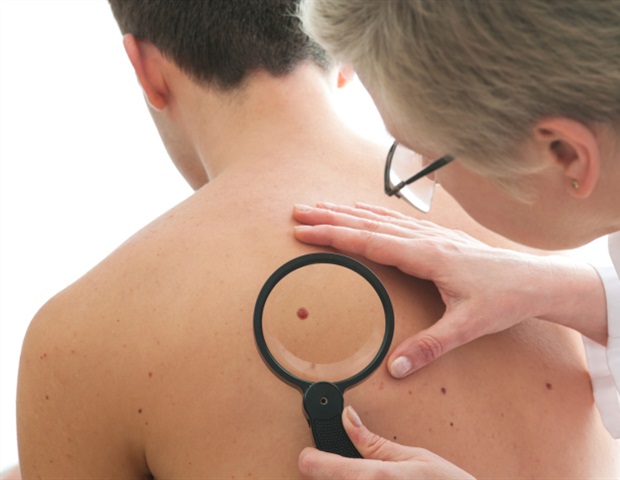By Lauri Vargo, MD, assistant professor of dermatology, University of Nebraska Medical Center, Omaha, as told to Susan Bernstein
Vitiligo is largely a chronic disease with an unpredictable course, so treatment can be challenging for many people. Every person responds differently to different medications. First, I establish their goals and expectations for their treatment.
The mainstay of treatment for vitiligo starting out includes different topical creams, light therapy, and oral steroids. But the world of dermatology is ever-evolving, so new treatments are emerging now for vitiligo. If we need to, we can turn to a toolbox of newer treatments. There is a lot of good research and evidence behind some of our older therapies for vitiligo, and most dermatologists will start with these treatments.
Vitiligo May Be Autoimmune
What causes vitiligo is still largely unknown. We think there’s an autoimmune component to it. Vitiligo is typically associated with other autoimmune conditions. Going through your history is extremely important in vitiligo. Autoimmune thyroid disease is one of the most common conditions we see in someone who has vitiligo.
There are some newer therapies for vitiligo, and I typically use those when we haven’t seen any improvement with the older treatments. We have to weigh all of the risks and benefits of any treatment. We have to think about the potential side effects of any treatment, and cost is also a big issue for some patients.
There are many new and exciting medications in dermatology, but access to them can be a big barrier. Older therapies are better covered by insurance. I don’t want to offer someone a topical cream that they can’t afford when they go to pick it up at the pharmacy.
Start With Topicals and Light Therapy
For vitiligo, we start with topicals and light therapy. We create each treatment plan on an individual basis because vitiligo can be a hard, frustrating condition to treat. People typically have lifelong disease and must continue their treatment. There’s no guarantee that we will be able to restore [skin] pigmentation or that your skin will return to normal.
One of the newer medications for vitiligo are janus kinase inhibitors, also known as JAK inhibitors. None of these are currently FDA approved for the treatment of vitiligo, but this will likely soon change.
With this new class of oral and topical medications, we have to address the potential side effects that come along with treatment.
Excitingly, we do have a topical version of one of these medications called ruxolitinib, which is currently used in eczema treatment. There have been some encouraging studies for it in the treatment of vitiligo, including facial vitiligo.
Typically, when we use topicals, we don’t get as concerned about systemic side effects. However, with these topical JAK inhibitors, including ruxolitinib, we are still unsure [how much of the drug you absorb through your skin] and how it could relate to potential side effects. That’s still a question.
Protect Eyes and Skin
There are other health risks for people who have vitiligo. Our melanocytes are cells that give us our pigment and protect our skin from the sun. So when you lack pigment-producing cells, you’re at greater risk for sunburn. I talk to all of my patients with vitiligo about how extremely important it is to keep skin covered and to protect your skin from burns. People with vitiligo don’t have that barrier to protect their skin from the sun’s rays.
I recommend that people with vitiligo or anyone use a sunscreen that’s SPF 30 or above, broad-spectrum, and water-resistant. It’s really important to apply enough sunscreen to your skin and to reapply it also. Most people don’t apply enough sunscreen to their skin. You need to apply 1 ounce of sunscreen at a time. That’s enough to fill a shot glass. You should reapply it every 2 hours or after sweating or swimming.
Ultraviolet protection factor or UPF clothing is another thing I recommend. You can find these clothes at many stores these days. This clothing provides extra protection from the sun. It’s really becoming popular with kids, too. Kids are wearing rash guards when they play outdoors. Because we have pigment-producing cells in our eyes, too, it’s important for people with vitiligo to use sunglasses to protect their eyes when they are out in the sun as well.
Not Just a ‘Cosmetic’ Condition
Our skin is our biggest and most visible organ. People with any skin condition are at increased risk of low self-esteem and a decrease in their quality of life because of their skin condition. People with vitiligo often are affected by this. I think it’s important for me to educate my patients with vitiligo, especially children, so they can explain what vitiligo is to other people, such as on the playground or in school. I want them to be able to feel comfortable with the skin they’re in. Adults with vitiligo, too, and all of us, are prone to self-esteem issues when it comes to our skin’s appearance.
I notice that a lot of people talk about vitiligo therapies as “cosmetic treatments” or vitiligo as a “cosmetic condition.” I feel that the term “cosmetic” suggests that we are taking something normal and enhancing it. But with vitiligo, we are treating your skin condition just as we would any other health condition you have.
If you have vitiligo symptoms, coming in for a diagnosis from your dermatologist is important. That’s because other skin conditions can mimic or look like vitiligo. There are some rarer conditions we want to rule out first. There are some allergic skin conditions that can look like vitiligo.
Makeup and Self-Tanners
One thing I talk about with my patients is a makeup product called Dermablend to cover up skin. You may also use self-tanning products with dihydroxyacetone. Using a self-tanner product is completely OK if you have vitiligo. You can use it to cover up skin lesions if you want a more even appearance. If you go out and get a tan, you will only tan the rest of your skin.
I often recommend light therapy to people with vitiligo. This is one of my favorite treatments for this condition. It’s also called phototherapy. It’s a treatment that uses directed ultraviolet rays. Sometimes, when I recommend light therapy, my patients say, “Aren’t you a dermatologist? I thought the sun is bad for your skin!” But this type of light therapy should only be done as directed by a dermatologist.









